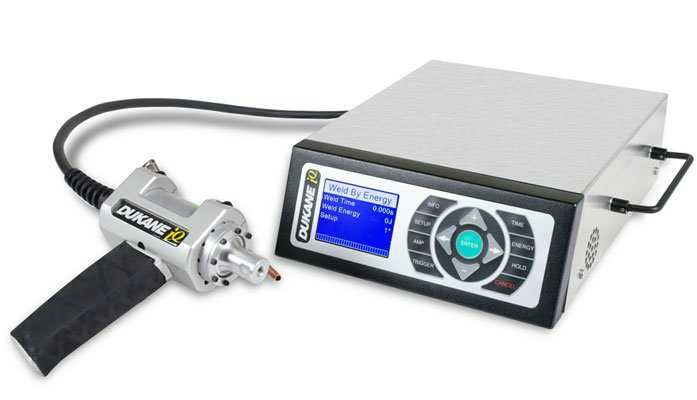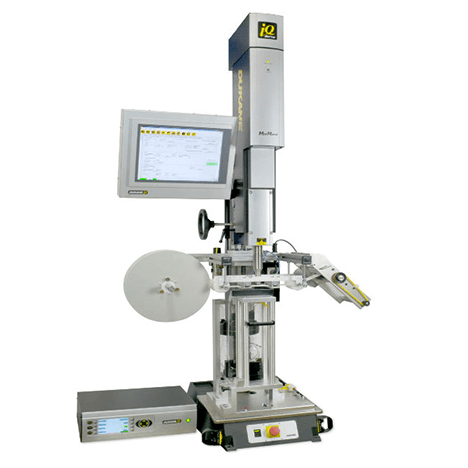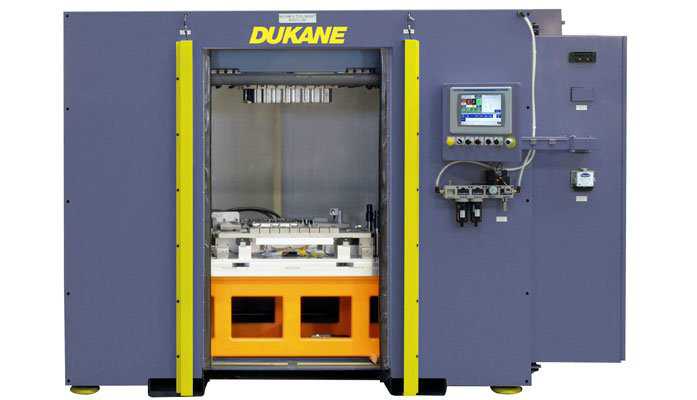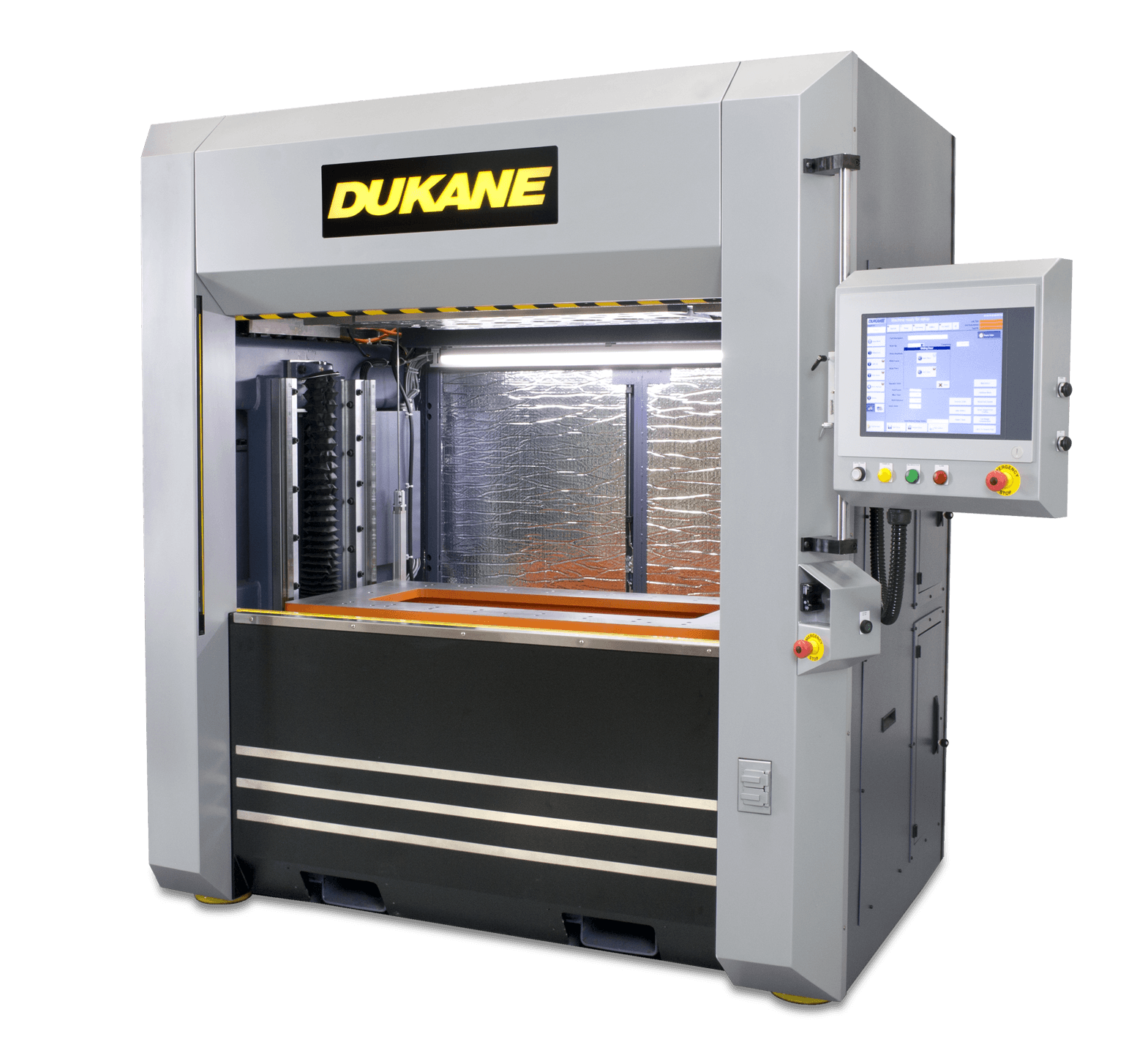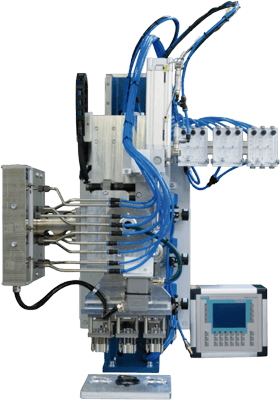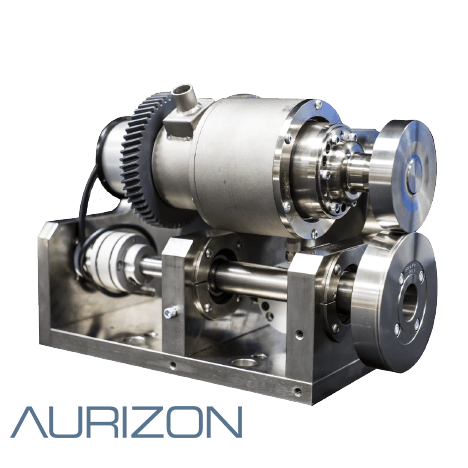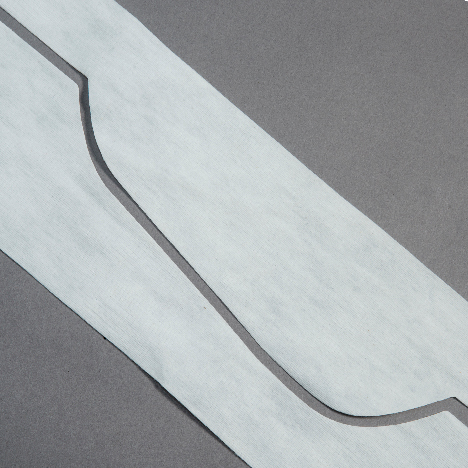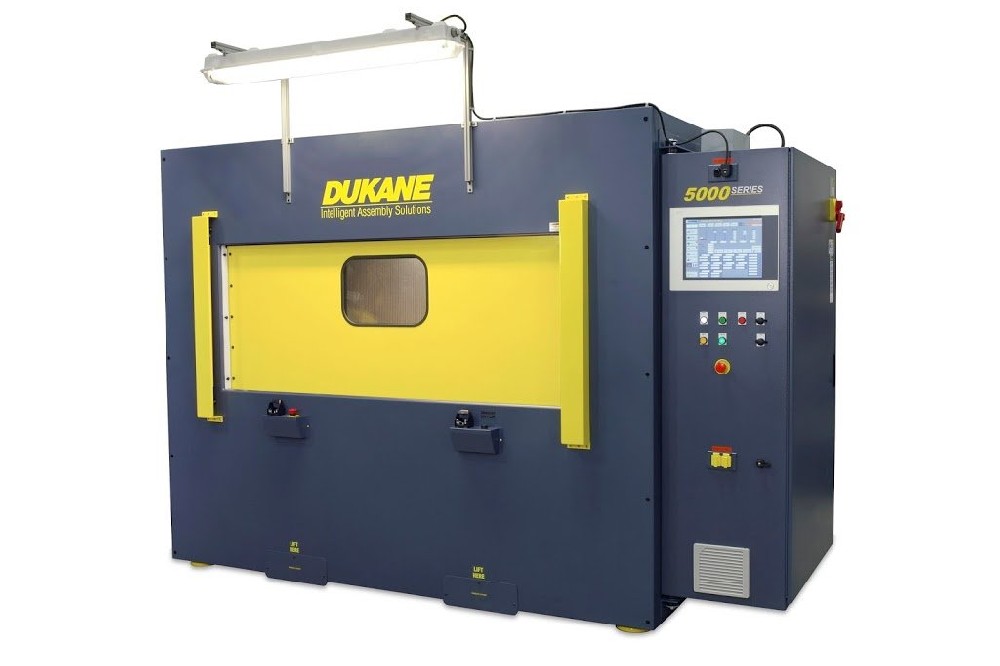Dukane’s patented ‘Q’ factor technology for Linear Vibration Welders is an algorithm to help users monitor and maintain the quality of a welding system over its lifetime. ‘Q’ factor is calculated using the resonant frequency of the welding head of the vibration welder and the time between which its amplitude reaches its peak and declines to half of its peak amplitude. In other words, ‘Q’ factor determines how many cycles of the resonant frequency it takes for the welding amplitude to decline in half. This is the system’s resonance quality factor, which determines how quickly a weld fixture’s amplitude decays. The longer it takes for the weld fixture to decay, the higher the ‘Q’ factor.
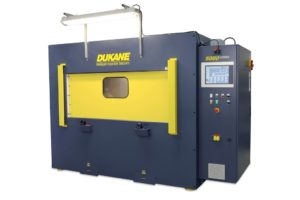 |
| Dukane’s 5000 Series Vibration Welder |
The Plastic Industry uses linear vibration welders to weld two plastic components, by creating linear oscillatory motion of one part relative to the other part. The parts are brought together by force, the oscillatory motion generates heat, which melts the adjacent surfaces of the plastic parts and creates a weld after the parts cool. The vibratory movement of one part relative to another part is generated by two electromagnets positioned between the moveable and stationary part of the welder. Both electromagnets apply force along the same coordinate line, but in opposite directions. The electromagnets are energized with a 180-degree phase shift, so that when the first electromagnet is energized, the second one is de-energized and vice versa.
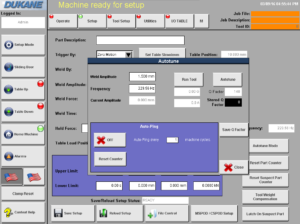 |
| HMI Screen showing ‘Q’ Factor |
It is important to maintain the frequency of the energizing cycle at the resonant frequency of the movable mechanical part of the welder. This allows for maximum energy transfer to the parts being welded. Any decrease in the ‘Q’ value would indicate that something has deteriorated in the system and that maximum energy is not being transferred to the plastic components. A typical value of the Q factor for a vibration welder is between 100 and 260. The higher value indicates a more robust system that runs more efficiently with fewer energy losses and is more reliable. This value is measured and stored in the machine process controller (or HMI) during factory testing. As a machine ages, the Q factor is monitored and compared to the original value. A decrease can serve as an early warning of improper tool installation or machine/tool deterioration.
here or call 630-797-4900.




